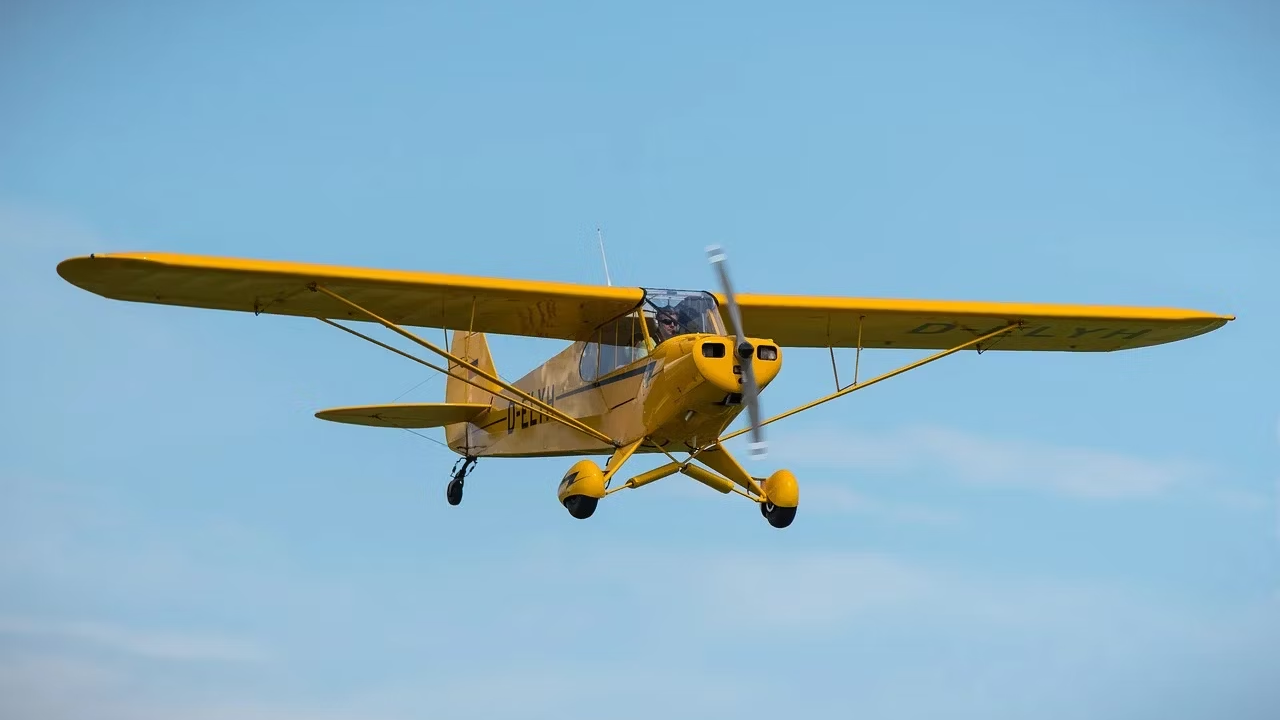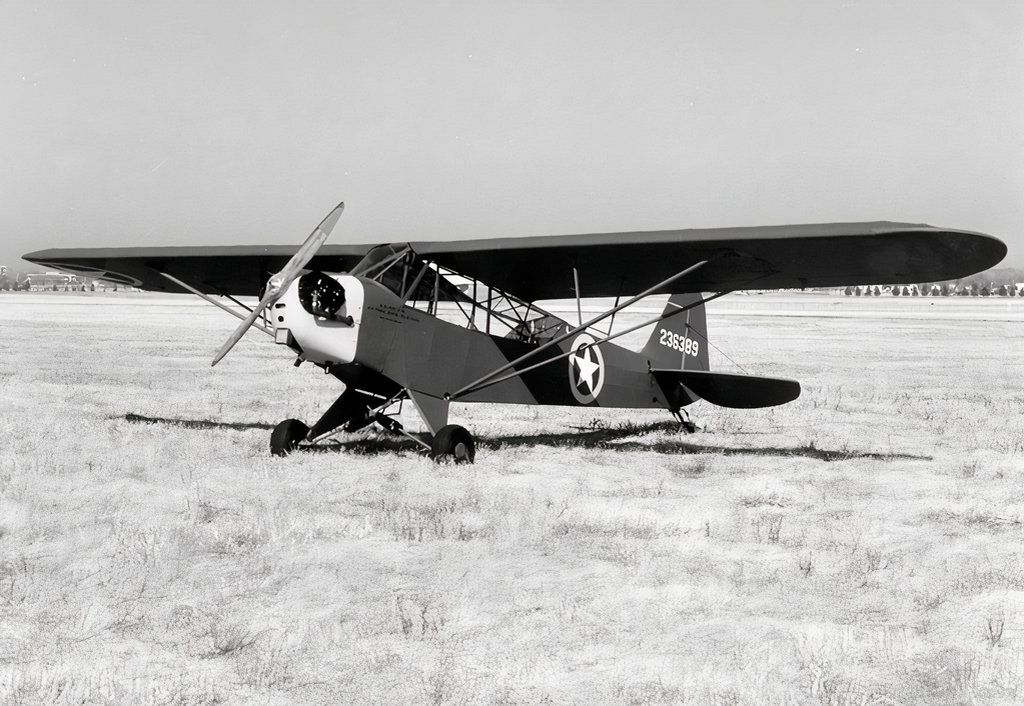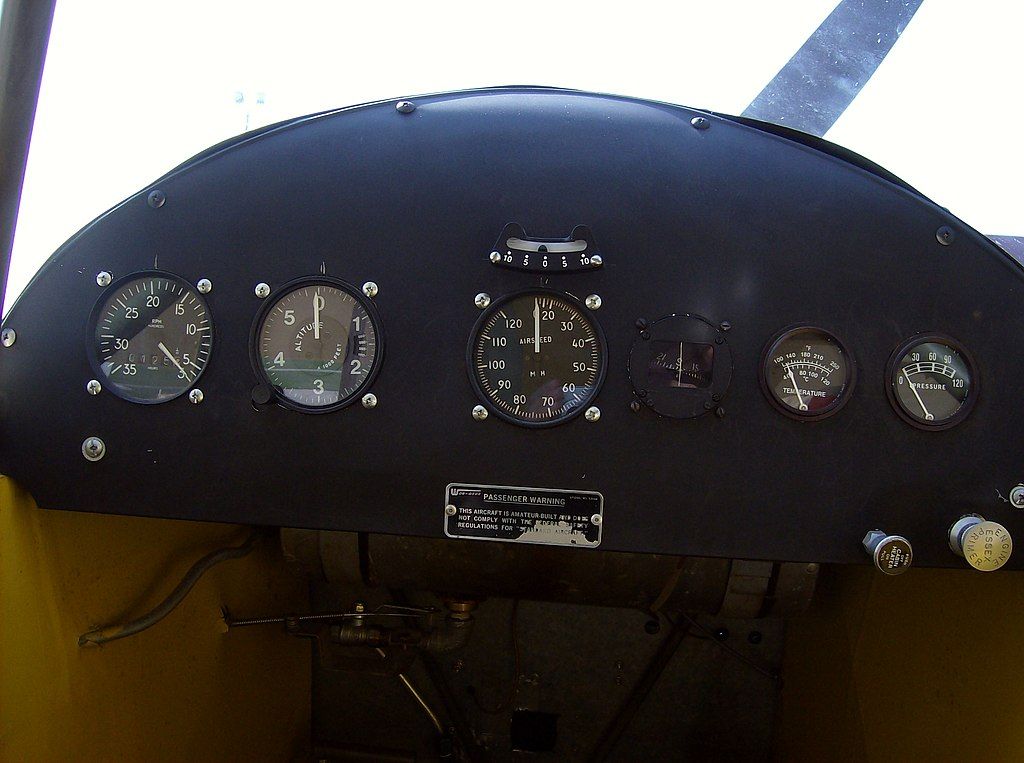Summary
- The Piper Cub evolved for versatile roles in both civilian and military aviation.
- The aircraft’s simplicity, reliability, and wartime effectiveness solidified its iconic status.
- The enduring appeal of the Piper Cub is preserved by enthusiasts and collectors.
- A direct derivative of the J-3 Cub, the PA-18 Super Cub is still produced today.
The Piper Cub is a legendary aircraft that has played a significant role in both military and civilian aviation history. Its journey from a civilian aircraft to a military workhorse and back to a civilian icon is a captivating story of adaptability and enduring appeal from the golden age of aviation.
Origins and Development
The Piper Cub’s story begins in the 1930s with its development by Piper Aircraft. The aircraft was initially designed as an affordable and simple two-seat airplane, making it accessible to a wide range of private pilots. The Cub was originally powered by a Continental A-40 engine producing 40 hp. The aircraft was quickly upgraded with a 50 hp engine, and then, by 1940, the Continental A-65 produced 65 hp.
The Piper J-3 Cub could cruise at about 85 miles per hour, which made it an ideal training aircraft and a popular choice for recreational flying. William T. Piper, the founder of Piper Aircraft, was instrumental in the Cub’s development and success. Often referred to as the “Henry Ford of Aviation,” Piper’s vision was to make flying accessible to the masses, much like Ford did with automobiles.
Photo: Pixabay
|
Produced |
1938-1947 |
|
Role |
Trainer/light aircraft |
|
Manufacturer |
Piper Aircraft |
|
Number built |
19,888 (US-built), 150 (Canadian-built), 253 TG-8 gliders |
|
Design |
High-wing, strut-braced monoplane with a large-area rectangular wing, powered by an air-cooled, flat-4 piston engine |
|
Uses |
Training, general aviation, military (reconnaissance, liaison, ground control) as L-4 Grasshopper during World War II |
|
Legacy |
Known for simplicity, affordability, and popularity, standard paint is known as ‘Cub Yellow’ or ‘Lock Haven Yellow’ |
Military Service
During World War II, the Piper J-3 Cub was adapted for military use and became known as the L-4 Grasshopper. Its simplicity, reliability, and short takeoff and landing capabilities made it perfect for reconnaissance, artillery spotting, and liaison duties.
The L-4 Grasshopper was used extensively by the US Army, providing critical support in battlefield observation and coordination.
Photo: Piper Aircraft
The Grasshopper in combat
One notable incident highlighting the L-4’s role was when two American soldiers used their Piper Cub to force a German Fieseler Fi156 Storch to crash, capturing the enemy crew. This event underscored the versatility and unexpected combat effectiveness of the Piper Cub in wartime.
The Cub played a major role in aviation history
The Piper Cub has figured in many notable historical events, particularly during World War II.
World War II Contributions
The Civilian Pilot Training Program (CPTP): The Piper J-3 Cub played a critical role in the CPTP, a program established in 1938 to train civilian pilots in anticipation of wartime needs. It is estimated that 75% of the pilots trained under this program learned to fly in Piper Cubs.
This initiative helped prepare many pilots for military service, including African Americans who became part of the Tuskegee Airmen and women who served as Women Airforce Service Pilots (WASPs).
Military Use as L-4 Grasshopper: During the war, the Piper Cub was adapted for military use and designated as the L-4 Grasshopper. It was used extensively for reconnaissance, artillery spotting, and communication.
The L-4 was instrumental in various military campaigns, including the invasions of North Africa, Sicily, and Italy. It also played a role in directing naval fire during the Normandy invasion.
Operation Torch: The J-3 Cub in its L-4 Grasshopper iteration played a role during Operation Torch, the Allied invasion of North Africa in 1942. L-4s were launched from aircraft carriers to conduct reconnaissance missions along the Moroccan coast.
Bazooka Charlie: One of the most famous Piper L-4 Grasshoppers was piloted by Major Charles “Bazooka Charlie” Carpenter, who mounted bazookas on his L-4 to attack German tanks. His aircraft, nicknamed Rosie the Rocketeer, became legendary for its unconventional combat role during the Battle of Arracourt.
Civil Air Patrol (CAP): Civilian-owned Piper Cubs were also part of the Civil Air Patrol, which conducted coastal patrols to spot German U-boats along the U.S. coast. These missions were crucial in safeguarding American waters during the early stages of the war.
Post-War Impact
After the war, most of the military Piper Cubs were sold as surplus and returned to civilian use. They continued to be popular for personal and recreational flying, contributing to the post-war aviation boom. The Piper Cub’s simplicity and reliability made it an enduring favorite among pilots, and it remains a symbol of American general aviation.
Post-War Transition
Prior to and during WWII, 19,888 Piper J-3 Cubs were built. More than 6,000 were produced for the US Army Air Corps and Navy. After World War II, many military Piper Cubs were sold as surplus for as little as one hundred dollars and returned to civilian life. Their affordability and ease of use continued to make them popular among civilian pilots.
The aircraft’s robust design and nostalgic appeal have kept it in production and use, even decades after its introduction. Today, the evolutionary derivative of the J-3 Cub, the PA-18 Super Cub is still being built.
Cultural Impact and Legacy
The Piper Cub became an iconic symbol of aviation due to its distinctive yellow paint and simple design. Light single-engine aircraft were often referred to generically as “a Piper Cub” regardless of their make and model.
The airplane has been featured in numerous aviation events, airshows, and even in media, embodying the spirit of grassroots flying.
The aircraft’s legacy is preserved by aviation enthusiasts and collectors who maintain and fly these vintage planes. Thousands of them are still flying.
The Piper Cub’s journey from a civilian aircraft to a military asset and back to a beloved civilian plane is a testament to its versatile design and enduring appeal. Its role in making flying accessible and its contributions during wartime have cemented its place in aviation history as a true icon.




